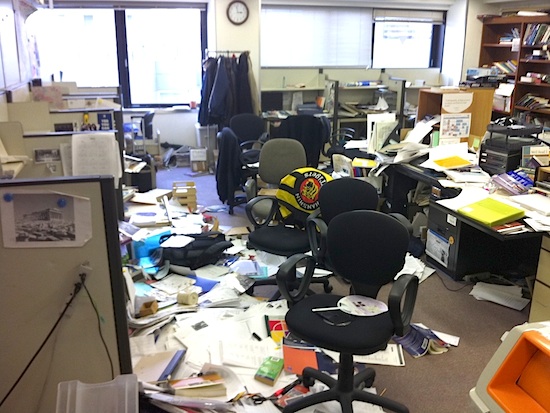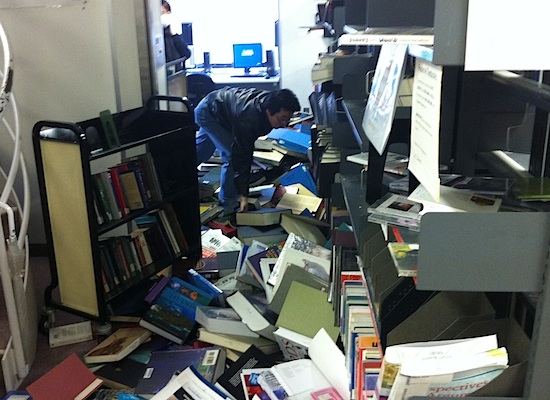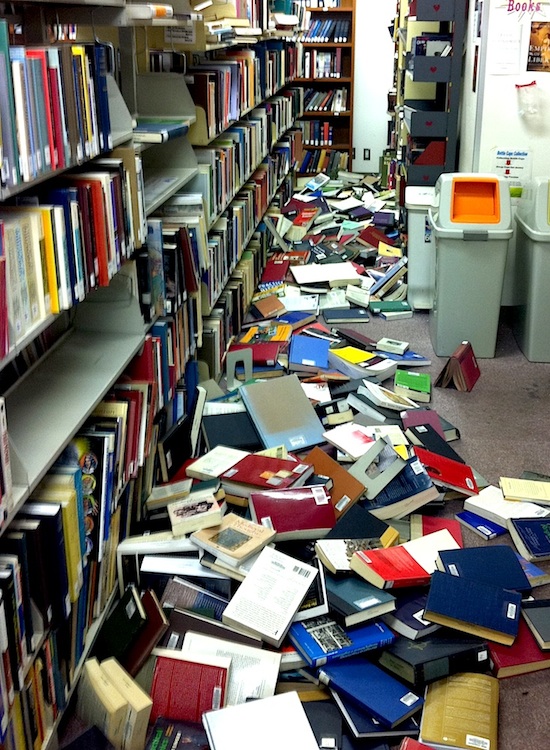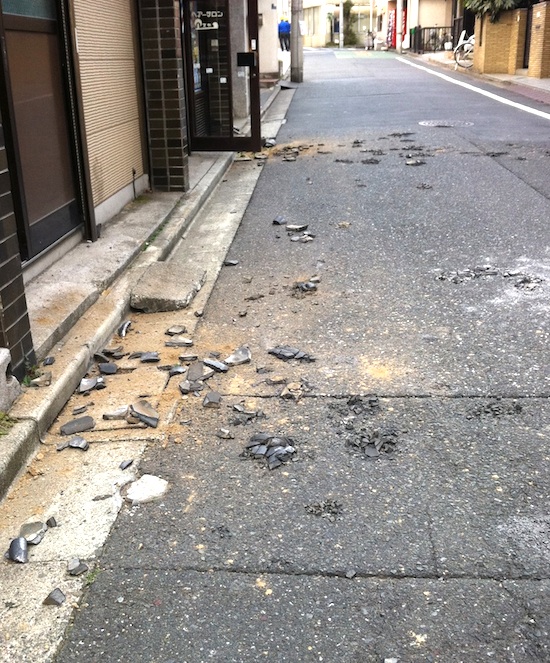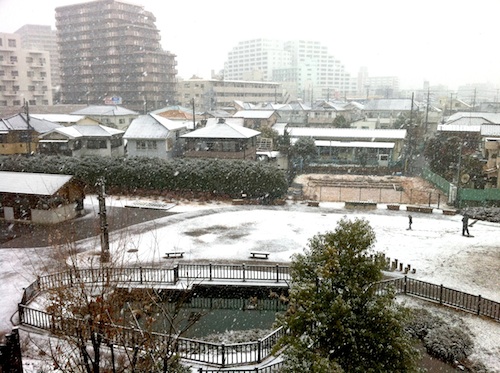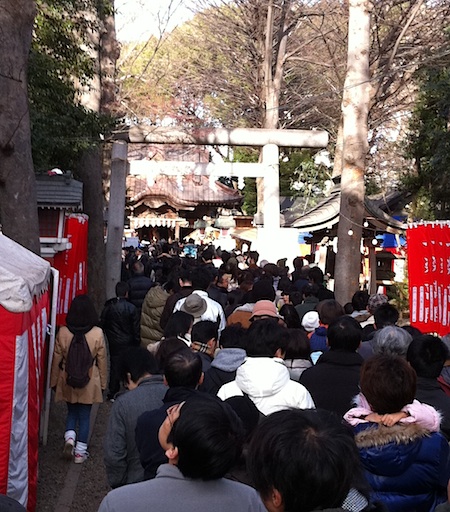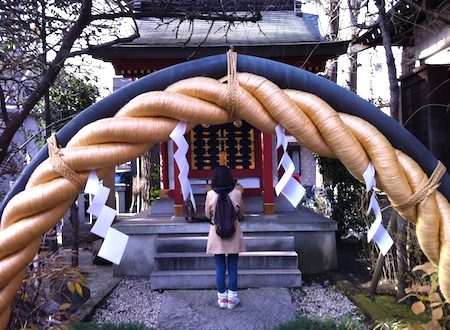We’re not quite there yet, but we’re appreciably on the way, and might be 90% of the way should nothing untoward happen. We’ve been looking to buy a home for either a few months or a year now, depending on how you count it. We started about a year ago, looking in Kanagawa, when the bank told us that I didn’t have much of a chance of getting a loan until I got my permanent residency. So I got that, and we started looking again late last year.
We’ve been going around to properties in the area since December, looking at several properties each weekend. We’re using a real estate agency known as “Suumo,” a Seibu firm. We tried looking at some properties in neighboring towns, but they just didn’t work out for us. The area we live in now, Hibarigaoka, is nice: two large department stores, lots of supermarkets, restaurants, and other shops. The train station is an express stop, and connects up with two subway lines, connecting to almost any other lines you could think of. It’s not too close to Tokyo, but not too far, either–about the right balance. Sachi didn’t want to live any farther out, and any farther in would be too expensive. The next station in, Hoya, had some possible properties, but the area was just too plain–not much there at all, just houses for a long way.
There was a place we looked at a few months back which had a nice location, but it was just a foundation under construction, and was out of our price range anyway. However, our agent called up and said that the property’s owner–a developer who bought a larger property from the prior owner and split the land into two lots (a very common thing in Tokyo)–was cutting the price by about $25,000. It was still a bit high for us, but the agent talked him down another $15,000, and it came in to our price range.
The land parcel is 102 m2 (31 tsubo), which is fairly average for this area. The location, however, is very good, and you know what they say about location. It’s a 7 or 8-minute walk from Hibarigaoka station, along a road that almost hits the station. There are tons of restaurants and small shops in the area. There are a few small grocery shops along the way, but 5 minutes in the other direction is a cluster of shops which includes a large, nice supermarket/store, a few video rental shops, and a few more nice restaurants.
The house we’re looking at is just off the roads that lead places, but it’s pretty quiet, so far as we can tell. The back of the house looks over a parking lot for a fitness canter, but it’s on the opposite side from the bedroom (which overlooks a small, quiet street), and the parking lot doesn’t seem to be very noisy at all–though we’ll have to check that. (The agent says he’ll take us for looks over the next few weeks at different times of the day, opportunities we’ll take to inspect the house very closely as well. I’ll also be camping out by the house at other times to check noise levels.)
In short, the location, while not perfect, is excellent. The main down side we can see is that there are no parks nearby–a bit of a disappointment, as we plan on getting a dog very soon. We can still visit parks, just not on an everyday basis.
Now, the house design is nothing special. No high ceilings, no stylish frills. Not even a dishwashing machine, something a lot of new places seem to have. It has a very standard look, nothing that would turn your head. The layout didn’t knock our socks off, but looking at a floor plan doesn’t always tell the whole story.
In fact, I thought that the floor plans were rather dull. One thing I do when I move in to a new place, though, is to plan out how the furniture will go. It helps me understand how the space can be utilized, and really helps with the moving. So I took the layout of this place into InDesign, made sure I had drawings of all our furniture to scale, and then started arranging things. I found that they fit quite nicely. We would utilize the upstairs most of all, and that would be the bedroom–big enough for our bed and furniture plus room to move around–a room for me, like a home office, about 10′ square, quite nice–and another room, about 9′ x 12′, very open and sunny, which we would make into a kind of second-floor living room, with a sofa, table, and the big TV.
Still, the design wasn’t knocking my socks off. So to compare, I took the floor plans for an “ideal” house that had been drawn up just for us. When we were looking at a plot of land in Hoya, a housebuilding firm drew up plans for us based on what we said we wanted. It looked really nice, and we were very interested in building it on some plot of land we might find in the future. Just for comparison, I also put it into InDesign, and started arranging the furniture.
It was terrible. Nothing fit, the living room had no way to comfortably set a sofa and television, and a dogleg between the living and dining areas completely wasted a large amount of space. The rooms for Sachi and I were just too small, and didn’t work for us very well.
Despite being sexier, the “ideal” layout didn’t live up to expectations–and the “dull” layout suddenly started showing promise. That, along with the location being as good as it is, started making the property look a lot more attractive.
Then there was the price; there was nothing wrong with the property (nothing we’ve been able to detect so far, at least), but the price was very good for that area. Just a block or so to the south, about the same distance from the station, were properties opening up–plots of land without houses yet–which were going for about the same as the housed property we’re looking at. Yes, they are about 10% larger, but the prices ranged from 25% to 45% more than our estimate of the land we were purchasing. That seemed to set the local land values such that our land seemed nicely priced, even if you allow for the close-by land plots to also be discounted.
One possible snag–or fringe benefit, depending on how it plays–is that the city of West Tokyo has plans for creating new roads through the town, and one of the planned roads goes through the property we’re looking at. However, the plan will probably not be realized for a few decades at least, if even ever. If it does materialize, it might come at just about at the time we could be looking to sell the house and retire elsewhere. Our agent told us that such eminent domain purchases were usually for good prices, better than market value, and that some people even speculated on such land. However, I’m still a bit suspicious–that the property should be offered to us for a lower price than most in the neighborhood already, plus there being this possible “benefit” way in the future… it’s something I want to look into, though I have to admit I am not sure how I would do it. But I have to wonder if the easier answer might be true–that we’re being sold a plot of land that others may not want because of possible future development in the area.
In any case, there are many steps along the way to buying a house, and we didn’t want to just sit by and possibly watch this one go by, should it be what we want. So we agreed to start the process of purchasing, comfortable that we could back out at any time over the next month. That involved putting up a million yen on the down payment, though it is fully refundable (the process does include signing contracts requiring 15,000 yen in revenue stamps, non-refundable of course). But in doing so, we have dibs on the property, and can still back out anytime up until March 14.
So we went in to the real estate office and spent much of the day there, as the agent walked us through 12 pages of legal and technical details, telling us the history and quality of the property, how the road in front is not city property so we will have to work with neighbors if it needs work, as well as a host of zoning details and contractual obligations.
Then we signed the forms, handed over the deposit, and arranged to see the house again later this week.
Either we could discover that the place is not what we want, or the bank might fail to give us the loan, or we could be moving into our new house by early April.

